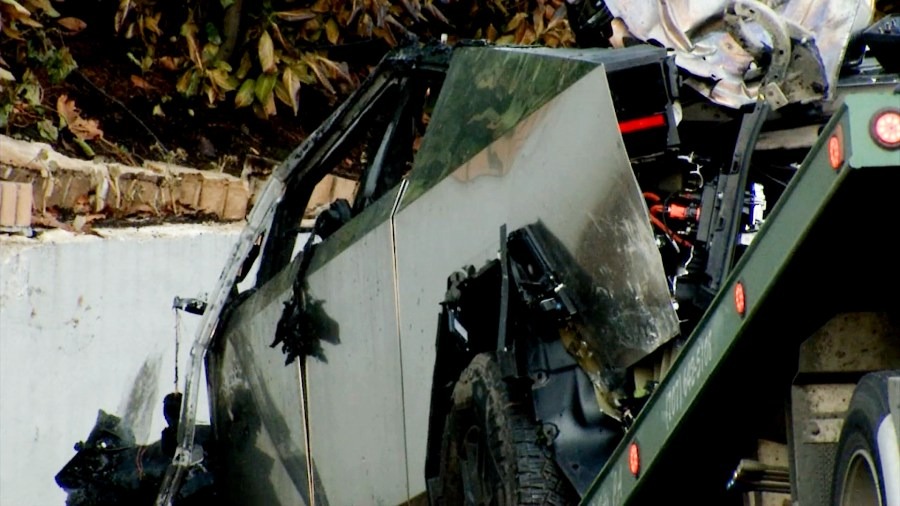Tesla Cybertruck Safety Concerns Renew Debate Over Vehicle Design After Fiery Crash
Disclaimer: This article is based on publicly available reports and legal filings. It does not allege wrongdoing by any party and aims only to discuss ongoing public safety and design issues related to electric vehicles.
In recent months, renewed attention has been drawn to Tesla’s Cybertruck safety features following a tragic crash in California that resulted in multiple fatalities. According to legal filings, questions have been raised about how the vehicle’s electronic door systems and manual release mechanisms performed during the emergency.
The case has reignited a broader conversation about electric vehicle (EV) safety, particularly regarding how drivers and passengers can escape when power systems fail after a collision.

Background: A Tragic Accident Sparks Legal Questions
Authorities confirmed that a Tesla Cybertruck carrying four college students was involved in a high-speed crash in late 2024. The vehicle reportedly struck a retaining wall before catching fire.
While one passenger was rescued by a bystander, the remaining occupants tragically did not survive.
The families of two of the victims have since filed wrongful death lawsuits against Tesla and the vehicle’s owner, alleging that a failure in the electronic door system prevented escape after the crash. They claim the Cybertruck’s power loss caused the doors to lock automatically, and that the manual release mechanism was difficult to locate in an emergency.
Tesla has not commented publicly on the ongoing litigation.

Broader Implications for the EV Industry
The tragedy has drawn attention not only to Tesla but also to industry-wide challenges in electric vehicle safety.
Auto engineers have long debated how to balance sleek, modern designs with robust emergency features that work even when the car’s main power systems fail.
According to transportation safety experts, redundant manual systems — including mechanical door releases, backup battery modules, and reinforced fireproof materials — are essential safeguards.
EV manufacturers around the world are now facing increasing regulatory pressure to standardize emergency egress protocols and ensure that all passengers can escape even after catastrophic electrical failure.
Tesla’s Response and Broader Safety Record
Tesla’s vehicles have consistently earned high marks for crash resistance and energy absorption in collision tests. However, the company has also faced scrutiny for recalls related to software, steering, and safety mechanisms in recent years.
The Cybertruck, first released in 2023, has been one of Tesla’s most talked-about models — praised for its futuristic design but criticized for production delays and reported safety issues.
Consumer safety advocates argue that while innovation is vital, transparency and testing standards must keep pace with rapid technological change.

Calls for Stronger Safety Standards
The lawsuits have renewed calls for stricter federal oversight and transparency in EV design. Lawmakers and safety agencies are urging manufacturers to ensure that every vehicle includes:
-
Clearly marked, easy-to-access manual escape levers.
-
Non-electric release systems that function even after battery or power failure.
-
Improved rescue training for emergency responders dealing with electric vehicles.
-
Publicly available data on post-crash survivability and fire response times.
Experts also emphasize that consumers should familiarize themselves with safety features in their vehicles — including where manual door releases are located and how to use them in emergencies.
Conclusion
The California Cybertruck crash serves as a sobering reminder that advanced technology doesn’t eliminate basic safety needs.
As the automotive world continues its rapid shift toward electrification, questions about emergency access, fire response, and electronic systems remain critical.
While investigations continue, the tragedy has already sparked an important national conversation about how to make next-generation vehicles safer for everyone. The hope is that lessons learned will lead to clearer design standards and life-saving innovations in the years ahead.
